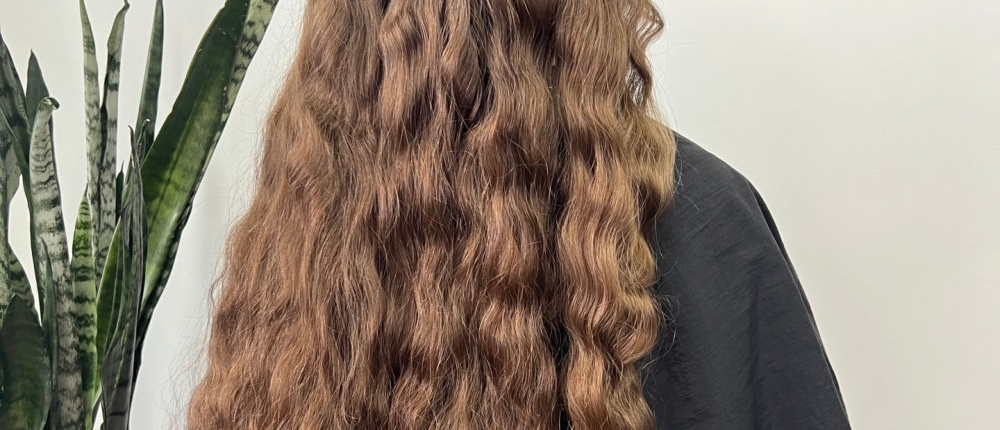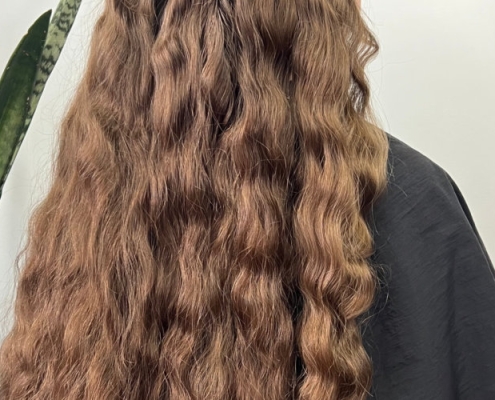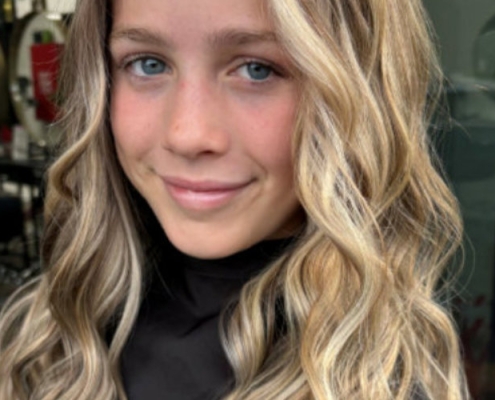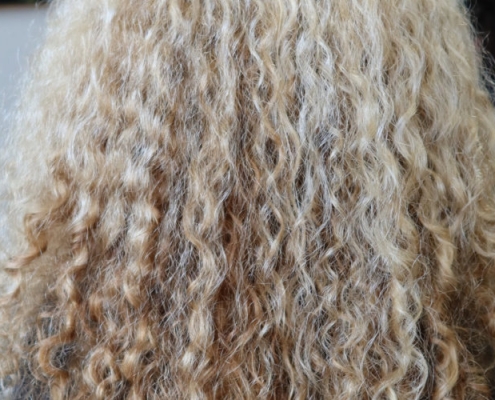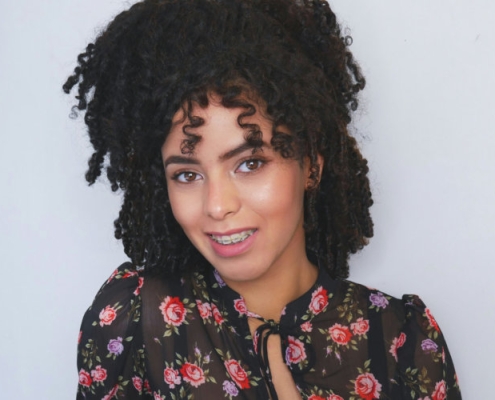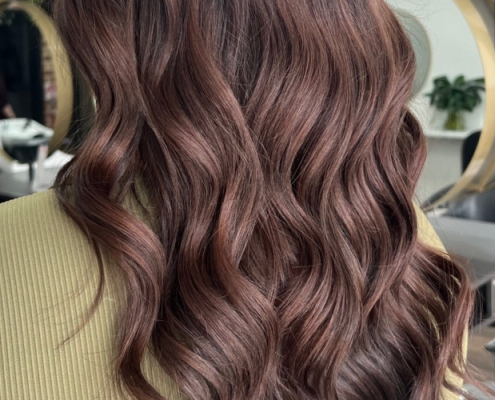Curly Hair and Hair Colour: How to Colour Without Damage
Colouring curly hair can be an exciting way to refresh your look, but it comes with challenges. Unlike straight hair, curly hair is naturally drier and more fragile, making it more susceptible to damage from chemical treatments.
However, with the right techniques, products, and aftercare, you can achieve vibrant, healthy colour while maintaining your curls’ bounce and definition. In this guide, we’ll explore the best ways to colour curly hair while minimising damage and keeping your curls looking their best.
Understanding How Hair Colour Affects Curly Hair
Curly hair tends to have a more porous cuticle, meaning it absorbs and loses moisture faster than straight hair. This makes it more vulnerable to the drying effects of hair colour, particularly when using permanent colour or bleach.
Common Effects of Hair Colour on Curls:
- Loss of moisture: Hair colour can strip natural oils, leading to dryness and frizz.
- Weakened curl structure: Harsh chemicals may loosen curls or make them feel limp.
- Increased porosity: Coloured hair may absorb too much moisture from the air, causing more frizz.
- Breakage and split ends: If hair is over-processed, it can become weak and prone to snapping.
If your hair is already prone to frizz, check out How to Avoid Frizz: Top Products and Techniques to keep your curls looking smooth and defined.
Choosing the Best Hair Colour for Curly Hair
The type of hair colour you choose plays a huge role in how your curls will respond to colouring. Some hair colour products are more damaging than others, so it’s essential to choose wisely.
1. Semi-Permanent and Demi-Permanent Hair Colours
If you want to minimise damage, opt for a semi-permanent or demi-permanent hair colour. These formulas do not contain ammonia and do not penetrate the hair shaft as deeply as permanent colours.
Benefits of Semi/Demi-Permanent Hair Colours:
- Less damaging: They do not require high levels of developer.
- Fade gradually: Perfect for low-maintenance colour changes.
- Maintain curl integrity: Less likely to alter curl pattern.
2. Ammonia-Free Permanent Hair Colours
If you’re looking for a long-lasting colour change, consider an ammonia-free permanent colour. These hair colour products provide full coverage while being gentler on curls.
3. Henna and Natural Hair Colours
For those who prefer a chemical-free option, henna and natural plant-based hair colours can be a great choice.
Pros:
- Completely natural and safe for curls.
- Conditions the hair while colouring.
Cons:
- Limited shade options.
- IMPORTANT: It cannot be removed and may cause a severe chemical reaction when combined with other chemical treatments. For example, if you have long hair, you may need to wait 4 to 5 years before safely adding highlights or professional colour, as the risk of a major chemical reaction remains.
How to Prepare Your Curls for Colouring
Colouring curly hair requires extra care and preparation to ensure that your curls remain hydrated, defined, and resilient. Since curly hair is naturally more porous and prone to dryness, taking the right steps before colouring will help minimise damage and allow the colour to take evenly.
Here’s how to prepare your curls properly before applying hair colour:
1. Deep Condition Before Colouring
Hydration is the key to protecting curls from excessive dryness and breakage when colouring. A deep conditioning treatment a few days before colouring will help strengthen the hair and lock in moisture, making your curls more resistant to chemical damage.
Why Deep Conditioning Matters:
- Strengthens the hair shaft: Colouring can weaken hair, but a deep conditioner fills in weak spots and improves elasticity.
- Boosts moisture retention: Well-hydrated curls absorb colour more evenly and resist excessive drying.
- Reduces breakage: Conditioning treatments help reinforce the hair structure, preventing split ends from worsening.
How to Deep Condition Before Colouring:
- Two to three days before colouring, apply a moisture-rich deep conditioner with ingredients like shea butter, argan oil, aloe vera, or honey.
- Leave the treatment on for at least 20–30 minutes (or longer for low-porosity hair).
- Use heat (such as a steamer, heat cap, or warm towel) to help the conditioner penetrate deeper into the hair shaft.
- Rinse thoroughly with cool water to seal in moisture.
What to Avoid Before Colouring:
- Heavy protein treatments: While protein is important for strengthening hair, using a protein mask right before colouring can make hair feel stiff and less flexible, increasing the risk of breakage.
- Silicone-based products: These can create a barrier that prevents colour from penetrating evenly.
For a full guide on keeping your curls moisturised before and after colouring, visit How to Care for Your Curls: The Ultimate Curly Hair Routine.
2. Clarify Your Hair
Avoid uneven or patchy colour results by thoroughly cleansing your hair before colouring. Clarifying helps remove buildup from styling products, oils, and hard water minerals that could prevent colour from penetrating properly.
Why Clarifying is Important:
- Removes product buildup: Hair gels, creams, and oils can create a barrier that blocks colour absorption.
- Ensures even hair colour application: Clean hair allows colour to deposit more evenly, preventing patchiness.
- Prepares the scalp: A clean scalp reduces irritation and ensures hair colour doesn’t mix with excess oil.
How to Clarify Your Hair Before Colouring:
- One to two days before colouring, wash your hair with a sulfate-free clarifying shampoo to remove buildup.
- If you have low-porosity hair, consider doing an apple cider vinegar rinse (mix one part ACV with three parts water) to help open the hair cuticle.
- Follow up with a lightweight conditioner to prevent excessive dryness.
- Let your hair air-dry completely and avoid using leave-in conditioners, oils, or styling creams on the day of colouring.
For more ways to protect your curls from frizz and buildup, read How to Avoid Frizz: Top Products and Techniques.
3. Trim Split Ends
If your hair is already dry or damaged, colouring will only worsen the problem, making split ends more noticeable and increasing the likelihood of breakage. A fresh trim before colouring ensures your curls stay healthy and bouncy.
Why You Should Trim Before Colouring:
- Prevents colour from exaggerating split ends: Damaged ends absorb more colour, often appearing darker or uneven.
- Encourages even curl formation: Removing dead ends helps curls clump better, making the overall style more defined.
- Reduces future breakage: Freshly trimmed curls are stronger and less prone to snapping after colouring.
When to Trim Before Colouring:
- If your hair is in good condition, trim one to two weeks before colouring to remove minor damage.
- If your ends are severely dry or breaking, trim a few days before colouring to avoid uneven colour absorption.
For professional haircuts tailored to curly hair, visit Haircuts and Styling Services to get a shape that enhances your curls while preparing for colour.
Extra Tips for Preparing Curly Hair for Hair Colouring
In addition to the main preparation steps, here are some additional expert tips to ensure a successful and damage-free colour application:
- Do a strand test: Before committing to a full colour change, test a small section of hair to see how your curls react to the hair colour.
- Avoid washing hair on the day of colouring: A little bit of natural oil on your scalp can provide extra protection from irritation.
- Use a bonding treatment: If you plan to bleach your curls, consider using a product like Olaplex or a protein-bonding treatment to strengthen hair before and after colouring.
- Limit heat styling before hair colouring: Heat weakens the hair cuticle, making it more vulnerable to chemical damage.
Post-Colour Care: Keeping Your Curls Healthy
After colouring, it’s essential to maintain hydration and protect your curls from fading.
1. Use Colour-Safe Products
- Choose a sulfate-free, colour-safe shampoo to extend colour longevity.
- Limit washing to once or twice a week to prevent fading.
2. Deep Condition Regularly
- Use a deep conditioning mask at least once a week.
- Look for ingredients like coconut oil, shea butter, and aloe vera to restore moisture.
3. Avoid Heat Styling
- Excessive heat weakens coloured curls, so air-dry or use a diffuser on low heat.
- Always apply a heat protectant before using any styling tools.
4. Protect Hair While Sleeping
- Use a silk or satin pillowcase to reduce friction.
- Wear a silk bonnet to keep curls intact overnight.
For more ways to style your curls post-colour, visit Best Hairstyles for Curly Hair: From Casual to Formal.
Final Thoughts
Colouring curly hair doesn’t have to mean sacrificing curl health. By choosing the right hair colour, preparing properly, and maintaining hydration, you can achieve stunning colour while keeping your curls bouncy and defined.
Thinking about making a big colour change? Make sure you’re avoiding common curly hair misconceptions by reading Curly Hair Myths: What You Need to Stop Believing.
Embrace your curls and enjoy vibrant, damage-free colour with confidence!

